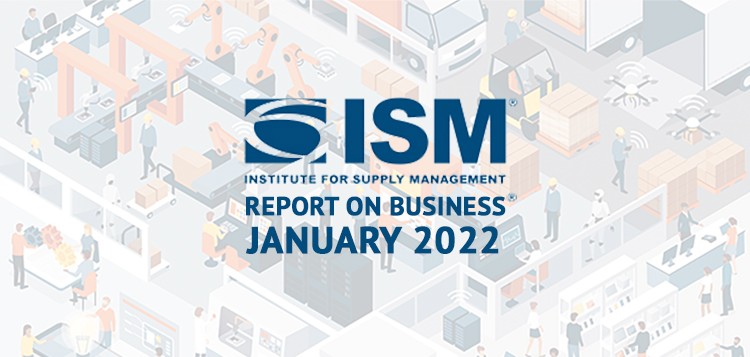Manufacturing PMI Settles Slightly in January Amid Persistent Concerns

The January 2022 Manufacturing ISM Report On Business is here, and it comes with plenty of food for thought. While the overall PMI pulled back slightly, there’s a lot more happening within the margins of the report’s individual metrics. New orders, prices, and employment are all of interest to industry executives, and the persistence of yet another variant makes COVID-19 an ongoing factor in supply chain disruption.
A closer look at the numbers
After falling to merciful levels at the end of 2021, prices shot back up to start 2022, jumping 7.9 points according to January’s metrics. This is the 17th consecutive month the index has been above 60%, and it continues to confirm a protracted period of inflation and material scarcity. New orders fell by 3.1 points in January, alongside production, which was down 1.6 points. Deliveries fell marginally (-0.3) despite order backlogs falling by 6.4 points.
The chief bright spot of the January report is a 0.6 point employment gain as industry added 467,000 jobs. The gain is a welcome departure from anticipated negative figures, and it makes January the fifth straight month of positive employment growth.
There’s still high demand for skilled labor
Five straight months of employment increases is a spectacular sign for industry, but manufacturing executives warn there’s still a long way to go. According to one executive in the fabricated metal products industry, “Lack of skilled production personnel, either from missing work due to (COVID-19) variants or leaving for better opportunities, [is] making it more difficult to complete work. [We’re] working off a backlog.”
The shortage of skilled employees in manufacturing has been talked to death, especially in recent years, which doesn’t make it any less of a burden on manufacturers. With retirement numbers increasing faster than new hires, and many manufacturers slow to adopt new, employee-centric hiring and retention practices, the current job market continues to cause problems for manufacturing. One saving grace could come in the form of investments in upskilling and employee education as more workers look to reinvent their manufacturing careers.

COVID-19 continues to create havoc
Omicron, the latest COVID-19 variant, continues to disrupt global supply chains at levels reminiscent of the original virus strain. This highly contagious variant , and its resulting labor shortage, is contributing to everything from supply bottlenecks to production slowdowns, and it continues to stifle U.S. production and global industry as a whole.
“We are experiencing massive interruptions to our production due to supplier COVID-19 problems limiting their manufacturing of key raw (materials) like steel cans and chemicals,” said one executive from the chemical products sector. It’s the same story for virtually every manufacturing sector as shortages, delays, and backlogs continue to create bottlenecks at every point in the value stream.
While many major manufacturers are well into supply chain restructuring processes, it could take years to yield results. Until then, producers are only as good as their best contingency plan.
Manufacturing remains strong
Despite the compounding struggles outlined in the January report, manufacturing remains firmly in expansion territory. Manufacturers will continue to persevere and overcome new challenges, and as we enter year three of the pandemic, there’s some optimism that today’s persistent problems may contribute to tomorrow’s solutions.